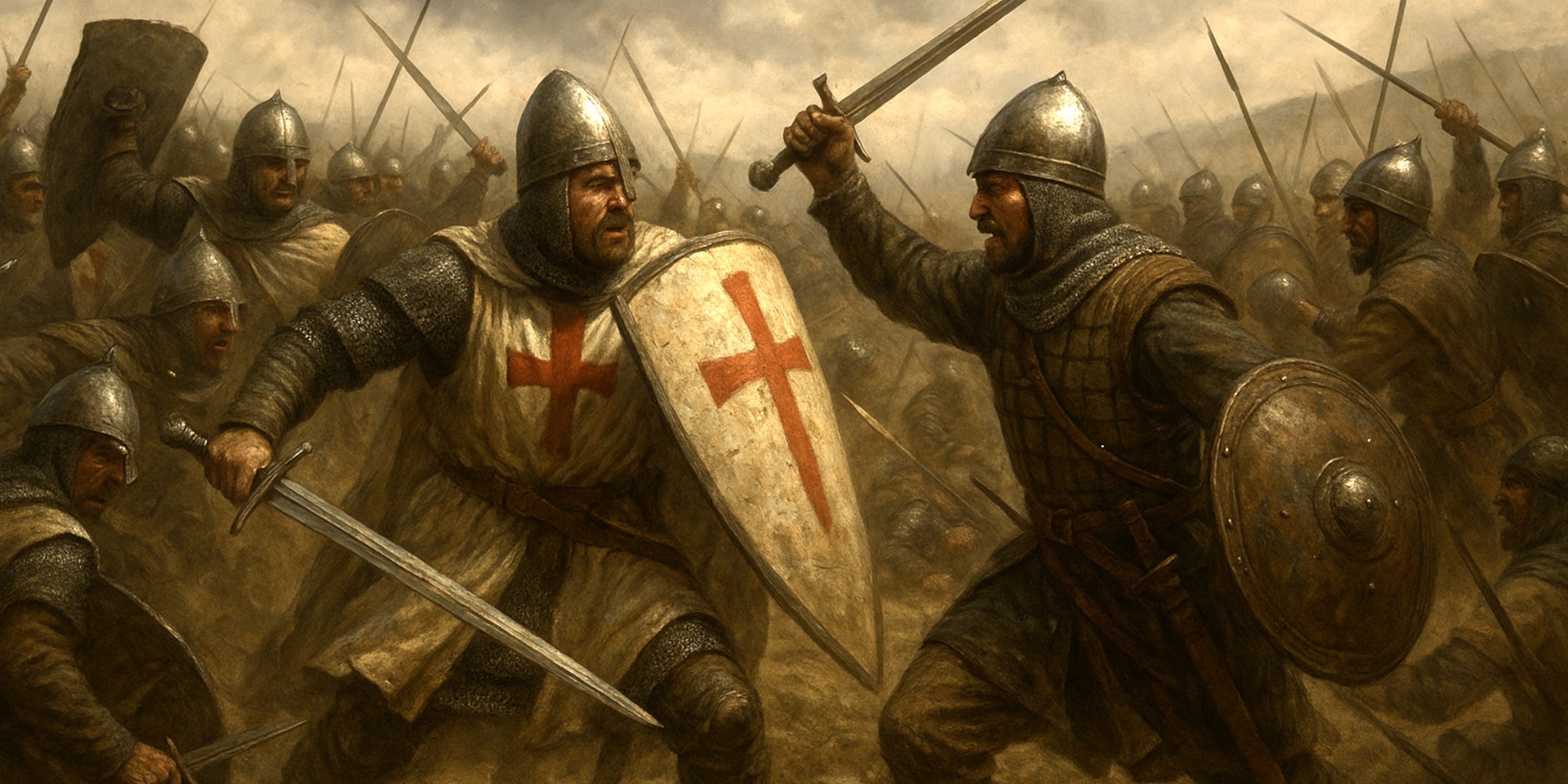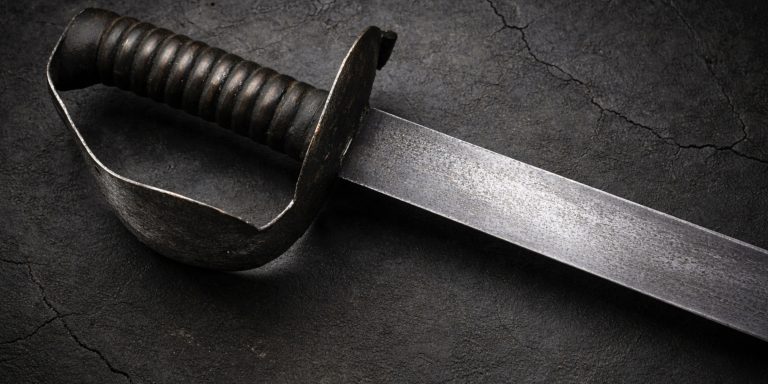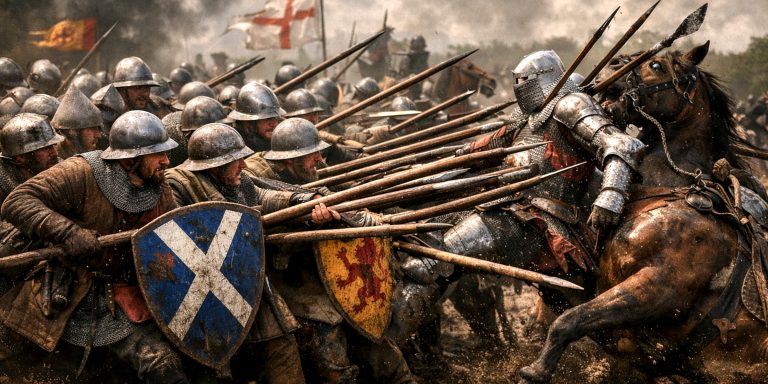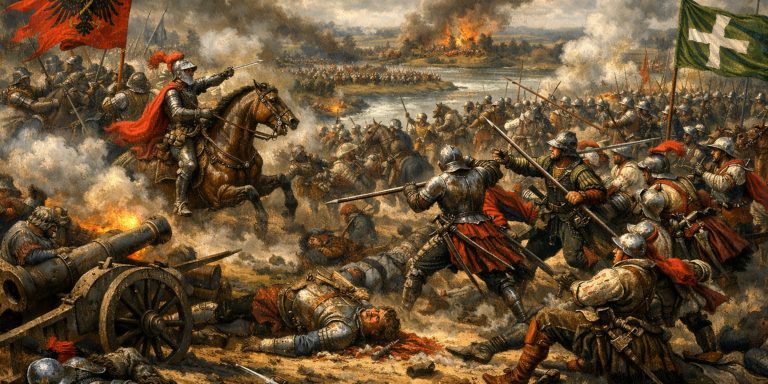
The Battle of Harim in 1164 was one of the most decisive clashes of the Crusades in the Levant. Fought near the fortress of Harim in northern Syria, it pitted the combined armies of several Crusader states against the forces of Nur ad-Din Zengi, ruler of Aleppo and Damascus. The encounter ended in a crushing defeat for the Crusaders, reshaping the balance of power in the region and reinforcing Muslim dominance in Syria.
Background
The fortress of Harim lay on the Orontes River, a key strategic position controlling routes between Antioch and Aleppo. In 1164, Crusader leaders sought to check the growing power of Nur ad-Din, who had united much of Muslim Syria under his command. Harim became the focal point of this confrontation, as Nur ad-Din threatened the Crusader-held Principality of Antioch.
Forces
Leaders
| Side | Leaders | Notes |
|---|---|---|
| Crusaders | Bohemond III of Antioch, Raymond III of Tripoli, Hugh VIII of Lusignan, Joscelin III of Edessa, Thierry of Alsace (Count of Flanders) | Represented a coalition of Crusader states |
| Muslims | Nur ad-Din Zengi, with support from his emirs and troops from Aleppo and Damascus | Well-organised and commanded with experience |
Troop Composition
| Side | Estimated Numbers | Composition |
|---|---|---|
| Crusaders | c. 10,000–12,000 | Heavy knights, mounted sergeants, infantry levies, some Turcopoles |
| Muslims | c. 15,000–18,000 | Light cavalry, heavy cavalry (ghulams), infantry archers, horse archers, engineers |
Arms and Armour
Crusaders
- Knights: mail hauberks, conical helmets, kite shields, arming swords (Oakeshott Type X–XII), lances.
- Infantry: spears, crossbows, round shields, falchions or short arming swords, padded armour.
- Turcopoles: light cavalry with bows, javelins, sometimes short straight swords of local pattern.
Muslims
- Cavalry: composite bows, curved sabres of Turkic–Persian influence, straight swords, maces, lamellar or mail armour.
- Infantry: spears, bows, straight swords or light sabres, round shields.
- Elite Ghulams: richly equipped with decorated helmets, mail, and finely forged sabres or straight blades
Course of the Battle
The Crusader coalition besieged Harim fortress in 1164, hoping to seize it from Muslim control. Nur ad-Din marched swiftly from Aleppo and deployed his army in the surrounding plains.
Despite their numerical strength, the Crusaders fell victim to tactical overconfidence. Rather than maintaining defensive discipline, they charged into Nur ad-Din’s prepared formations. His cavalry feigned retreat, drawing the Crusaders into an ambush. Surrounded and cut off, the Crusader forces were overwhelmed.
Many of their leading nobles, including Bohemond III, Raymond III, and Joscelin III, were captured, while Hugh of Lusignan was killed. Only Thierry of Alsace escaped back to Antioch.
Timeline of Events
- July 1164: Crusader coalition begins siege of Harim fortress.
- Early August 1164: Nur ad-Din marches from Aleppo with reinforcements.
- 12 August 1164: Battle of Harim fought; Crusaders suffer crushing defeat.
- Aftermath: Crusader leaders taken prisoner to Aleppo; Antioch weakened and forced onto the defensive.
Contemporary Quotes
- Ibn al-Athir, Muslim chronicler: “The Franks advanced with pride, but Nur al-Din by his stratagem broke them as a pot is broken.”
- William of Tyre, Latin chronicler: “The flower of our nobility was cast down, our leaders in chains, and the land was filled with mourning.”
Archaeology
The fortress of Harim itself has been the subject of limited archaeological study, though remains of its medieval walls and towers survive in modern-day Idlib Governorate, Syria. Evidence of multiple sieges, including damage to fortifications, suggests the intensity of warfare around the site. The area remains difficult to access due to ongoing conflict, limiting large-scale excavation.
Outcome and Legacy
The Battle of Harim was a disaster for the Crusader states. Antioch, left without its prince, became vulnerable, and the capture of so many high-ranking nobles weakened the Crusader position across the Levant. Nur ad-Din’s prestige soared, consolidating his control over Syria.
The defeat at Harim foreshadowed further setbacks for the Crusaders and demonstrated the growing tactical superiority of Muslim commanders. It also underlined the dangers of overconfidence and reckless charges by knightly cavalry when facing disciplined and mobile armies.
Conclusion
The Battle of Harim marked a decisive moment in the struggle for control of northern Syria. It highlighted Nur ad-Din’s leadership and the effectiveness of Muslim cavalry tactics against the heavy knightly charges of the Crusaders. The consequences reverberated for years, shifting the balance of power and paving the way for the rise of Saladin a decade later.
Watch the documentary:



